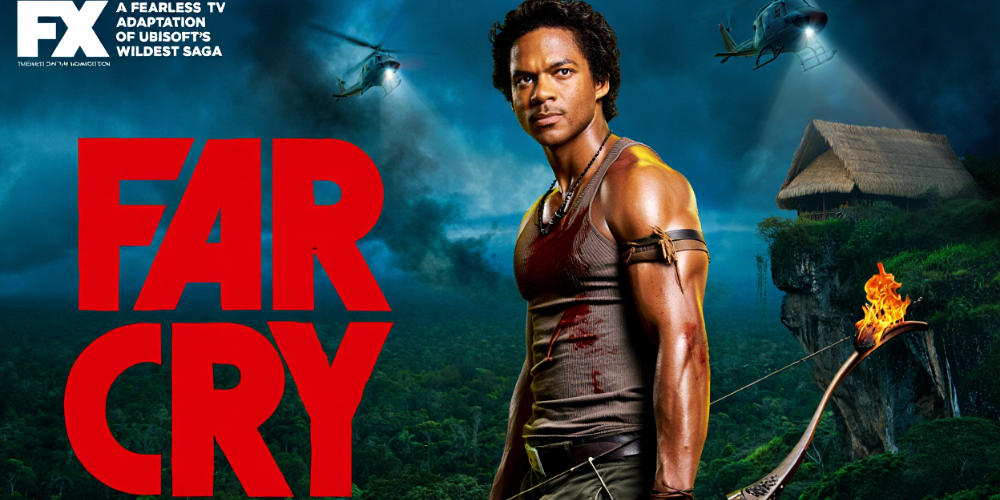FX eyes Far Cry: a fearless TV adaptation of Ubisoft's wildest saga
2025-08-11

Reports suggest FX has set its sights on adapting Ubisoft’s Far Cry into a live-action TV series, and that premise alone comes charged with promise and risk. The franchise is known for volatile paradises, mercenary politics, and antagonists who monologue about sanity while the world fragments around them. If the adaptation truly embraces the darkest, most absurd parts of humanity, it will have to juggle pulp spectacle with sharp social commentary, a balance FX knows well from shows like Fargo and The Americans. You and I both know Far Cry is more than exotic vistas and explosions; it’s about delusion, ideology, and the ways charismatic leaders bend followers to their will. Hearing that FX is circling a project that leans into those themes suggests a series that isn’t timid about moral gray space, satirical bite, or hard consequences. That’s a thrilling prospect, but only if the creative team resists easy edginess and digs for meaning beneath the chaos. FX’s reputation for patient character studies, tense pacing, and pitch-black humor could be a snug match for Far Cry’s volatile mood. While details remain under wraps, the notion of partnering with Ubisoft Film & Television would make sense, ensuring access to the franchise’s visual language, lore touchstones, and a pipeline of creative oversight that can prevent missteps while still inviting bold choices.
Main Part
One early creative fork is whether to adapt a specific game or craft an original saga that samples motifs from across the series. Vaas, Pagan Min, Joseph Seed, and Antón Castillo are titans of menace and charm; any of them could anchor a season, yet recycling plot beats would invite unfavorable comparisons. An anthology structure, where each season relocates to a new region with a fresh cast, mirrors the games’ spirit of jumping into unfamiliar cultures and conflicts. From Rook Islands’ sunburnt anarchy to Kyrat’s royal pageantry, Hope County’s cultic dread, and Yara’s simmering revolution, the settings are practically characters. Translating open-world chaos to television might involve set-piece arcs that spiral from humble objectives into cascading crises, while keeping viewers grounded through a desperate protagonist whose agency constantly collides with fate, ideology, and survival. The best versions would fuse personal stakes with regional power dynamics, so every victory complicates the map instead of tidying it.
Getting the tone right is everything. Far Cry thrives on uneasy laughter: you win a skirmish, then notice the moral cost, then realize the joke might be on you. FX has a knack for that oscillation, letting characters be monstrous, magnetic, and human within a frame that refuses easy catharsis. Expect biting satire about extractive corporations, narco-politics, militias, and media mythmaking, but also intimate portraits of locals trying to feed families while power brokers wage theater. The show can thrive by pairing pulpy propulsion with documentary-like texture: heat haze, storm-lashed coastlines, creaking jungle, and night skies lit by tracer fire. Smart worldbuilding would foreground indigenous voices, translators, fixers, and smugglers, not only foreign interlopers; that lens widens the story beyond a tourist nightmare and acknowledges histories that existed long before any outsider arrived. If FX lets quiet scenes breathe between the detonations, the series can land emotional truth alongside spectacle.
On the craft side, an eight-to-ten episode order feels plausible, balancing momentum with room for character turns. A hybrid production approach could mix location photography with volume stages for dangerous terrains, while practical pyrotechnics sell the chaos without turning sequences into cartoon mayhem. Casting will be crucial: you want a lead who can pivot from fear to audacity in a heartbeat, plus an antagonist whose charisma makes bad choices feel seductively logical. Music matters too; Far Cry’s identity leans on regional sounds, menacing percussion, and ironic needle drops that cut against the action. The writers’ room should consult regional experts, sensitivity readers, and historians to avoid caricature and to debate how far the satire can go before it loses empathy. Get that calibration right, and the series can entertain while still having something sharp to say. Distribution-wise, FX’s pipeline to Hulu could help the show find global audiences that engage weekly and then binge rewatch to unpack layered themes.
Conclusion
All told, a Far Cry project at FX sounds like a match with serious potential, provided the creators commit to the franchise’s unruly DNA rather than a safe, sanitized package. Fans crave bold set pieces and unforgettable villains, but they also expect the underlying critique: how power reproduces itself, how colonizing fantasies are sold as salvation, how ordinary people get drafted into conflicts they never asked for. If the series keeps that double vision—pulp thrills alongside moral accounting—it could stand apart in a crowded field of game adaptations. I’m hopeful, but I’m also watching for shortcuts that flatten culture into wallpaper or reduce trauma to shock value. Give us audacity with accountability, spectacle with soul, and a protagonist whose choices carry weight, and we might finally get a game-to-TV leap that feels both feral and thoughtful. If FX threads that needle, the result could be the rare adaptation that sparks debate as fiercely as it entertains.







